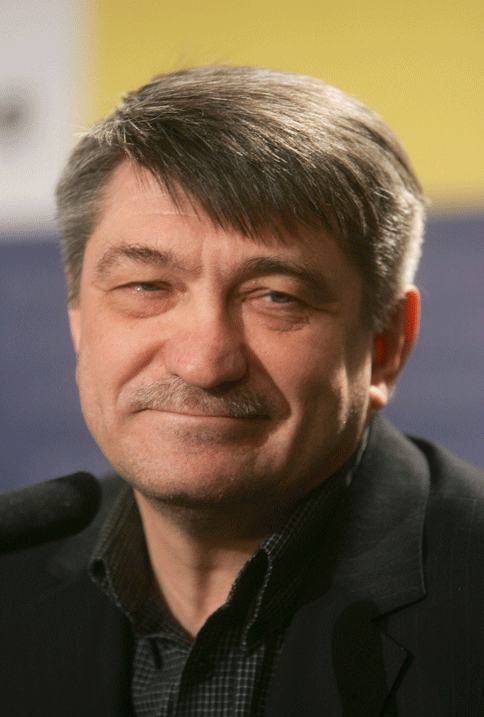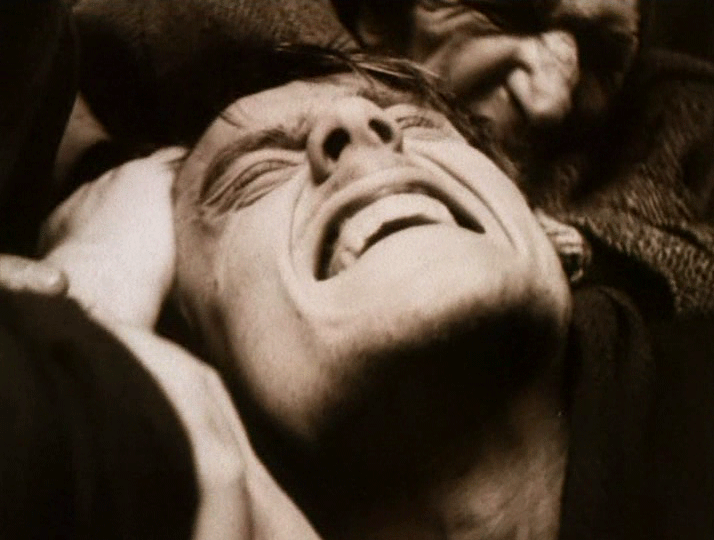Imagine yourself being the lone person with a corpse of someone who is dear to you. What do you do when you are all alone but still have to cremate the deceased with respect to the societal procedures? This is what Aleksandr Sokurov wanted to show to the audience.

The Second Circle (Krug Vtoroy) (1990) often gets hidden behind some of the more popular movies by Sokurov like Russian Ark (2002) or Faust (2011). It makes it hard to find the movie on any popular streaming platforms. But luckily you can watch the movie here.
The movie takes place in the backdrop of a remote Siberian Soviet era town. All the colours are monotone. It's either grey or sepia tone with a tinge of red here and there. The movie begins with the descent of the protagonist in a heavy blizzard. Everything goes quiet after that.
Music is not the main element in the movie to bring about emotions. The director has focused on his visual perfection in such a way that it plays the part of tone without needing a tune.
Death is beyond a physical construct, it leaves behind memories for people who were close to the person who dies. In this case, it’s the protagonist's son who has to deal with the looming memories of his father. As the movie follows, it is evident that the son and the father were not close to each other. The sole reason the son visits the town is to cremate his dad.
The dilapidated house we see in the movie talks tales about depleting health. A person who is unable to keep his place in shape is a person who is unwell himself. The leaky ceiling, the dirty dishes, the dusty furniture are some of the specifics that we see. The United Nations Sustainable Development Goals’ emphasis on Good Health and Well-Being should be available no matter how old or disabled someone is. Getting old should not be a lonely journey, but a space to reside in peace.
Contemplation—the protagonist's mind is always contemplating while he carries out societal tasks of burial. The first moment was when he had to wash his father’s body. Without a source of running water, he had to take the body outside, and use the snow as a means of water to bathe the corpse. As he runs his hand through the lifeless being, he is constantly trying to understand what he is supposed to feel. There is numbness when it comes to showcasing emotions.

Adding to the misery of a lost parent, the son gets pickpocketed on his way back from the village. All the money that he had in order to pay the undertaker for the cremation was robbed. The rather snappy undertaker, even though she tried to charge extra for the cremation, shows a soft side when she realized the money had been stolen. She pays from her pocket to buy a coffin and some accessories for the protagonist.
The pace of life in a rural community moves slower than in an urban space. It is evident in the movie as well. It feels like no one actually cares what happens in that part of the world. Investing in rural communities helps in the growth of the country as a whole. Countries like Canada have started investing and developing the rural communities ever since the United Nations Sustainable Goals for Industry, Innovation and Infrastructure came into play.
It has been over three decades since the movie was made and it resonates well with the current Russia-Ukraine conflict. Where is the Russia that we see in the film? A Russia that talks about death, loss and emotions so deeply? The country we see today is devoid of any of these attachments. Killing and getting killed en masse, for what?
At the end of the day, all the people who live through the conflicts in life only have memories and emotions about the person who they lost. A world devoid of the person who was close to you will be a world that will be different.
“The lucky are the nearest and the dearest of ours who died before us.”—quote from The Second Circle.
